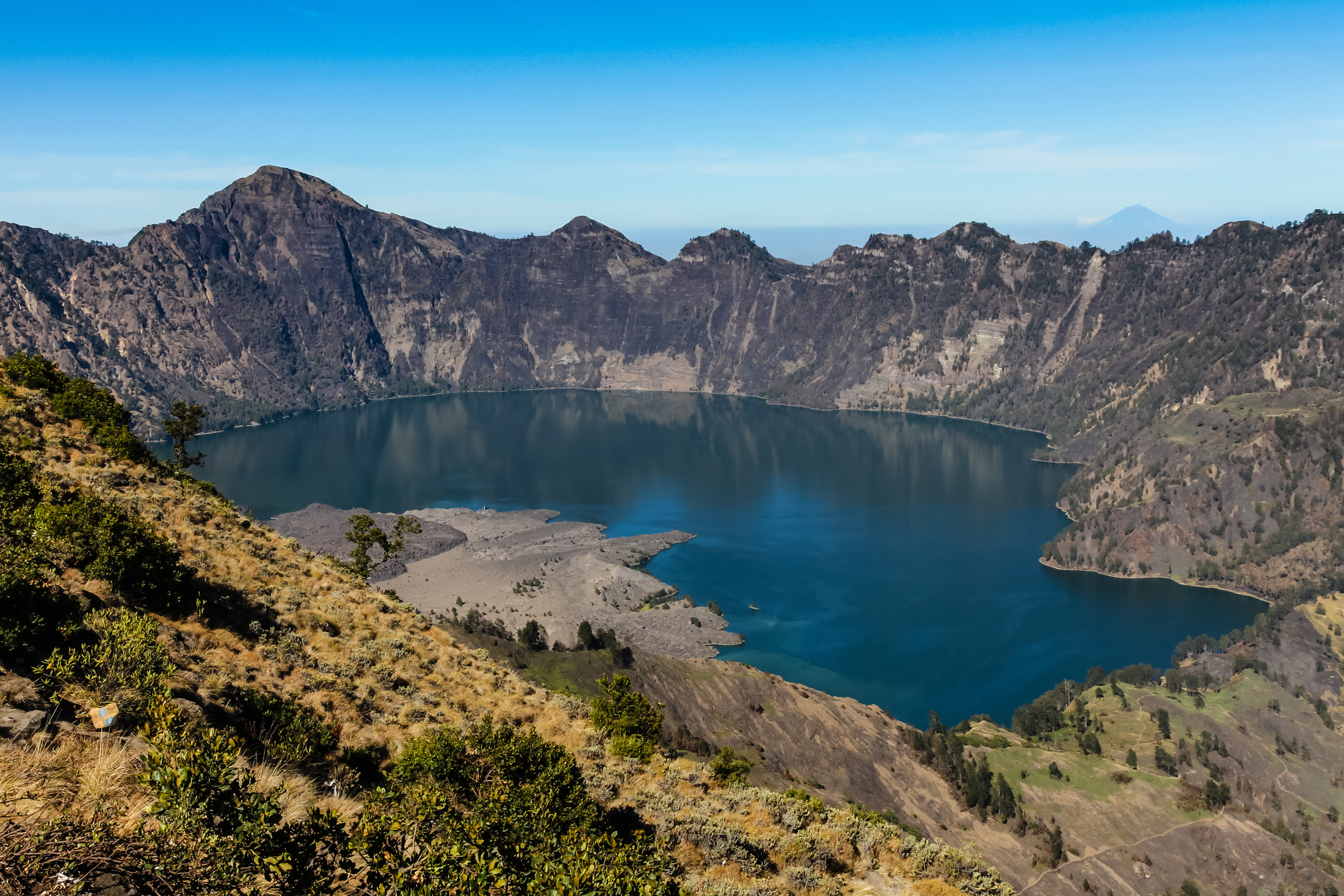Indonesia has 13,000 islands, the most famous amongst them being Bali, a much touted tourist destination for sun, sand and sea. Look a little to the left of Bali, and you will find an island of similar size called Lombok. This island would be the Cinderella among Indonesia’s many islands, waiting for the fairy godmother to arrive. Lombok is what can be called the Bali of the future, waiting to be discovered! If you are wondering why it is called ‘Lombok’, take a look at the carpets of hot red chillies that are grown on the island and you will know why. Lombok is a confluence of cultures that can be linked to the islands being occupied in turns by the Dutch, Japanese, not to mention the constant efforts of the Balinese to rule the island centuries before. The Sasak people are the original inhabitants of the islands and have withstood the influx of people and time. While the Sasak’s mostly follow Islam, the first religion on the island, there are pockets where one can find Buddhist temples, Hindu temples under Balinese influence and Christian shrines probably from the Dutch ruling. Rich culture apart, Lombok like Bali, boasts of sun, sand and sea, just that they are more pristine and undiscovered. Lombok deserves some time for discovery and here are some must-see places in and around the island. Gili islands How many times have you wished yourself to a remote island with a few trees and a book for company and away from the maddening city? The Gilis’ are this and more. In Indonesian, Gili means ‘Small Island’ and that is just what the three little green islands are – Trawangan, Air and Meno. They are small and beautiful, like little green pearls set in the deep blue of the ocean. They are popular, yet unspoilt islands primarily because motor vehicles are not allowed on them. The ambience on these islands is almost legendary and very clearly defined. The largest island is Gili Trawangan and is a favourite among the party animals for its many beach bars. Gili Air is for those who like some quiet, without missing out on good food and snorkelling. While Gili Meno, the smallest island is where you may find yourself owning the solitary beaches, atleast till your vacation ends. Gili Air and Gili Meno are a study in contrasts. Gili Air is called so as it is the only one with fresh water available – air means water in Indonesian. Meno on the other hand only has a small salt producing lake and its fresh water brought from Lombok by boat Must Do: Check out water sports like scuba and snorkelling are among the best in the world as coral reefs abound here. Don’t forget to visit the turtle sanctuary at Meno, they might teach you a thing or two about the slow life! Mount Rinjani Gunun or Mount Rinjani has several distinctions attached to it; that of being the second highest volcano in Indonesia,housing the beautiful Crater Lake called Segara Anak and most importantly the Gungung Rinjani National Park. Rinjani is associated with the Javanese word for God and the Mighty Rinjani as the locals call it looks in every way divine, standing tall at 3726 meters. A trek up the mountain is the best fitness check, but it does give you many ‘pause points’ to gape at its picturesque beauty. Rinjani lies inside the Gungun Rinjani National Park, significant because the park represents the line of transition for the flora and fauna into the typical Australasian ecosystem. The zone is called the Wallace line and is much studied for its wide range of plants and animals. After a tough climb atop the mountain, the breathtaking view of the crescent shaped lake Segara Anak, feels almost as if nature is rewarding you for your patience! Segara Anak, or the ‘Child of the Sea’ is a lake that is as blue as the sky itself, and looks like a piece of heaven fallen unto earth. Must Do: Save time for your trek up the Gungun Rinjani, as it takes at least 3 days, can be approached from either Senaru or Sembalun Lawang villages. Beaches Senggigi beach is the most popular among beaches that offer water sports. If after a sedate day at the Gilis’, you are looking for that adrenalin rush, Sengigi is where you ought to be. Canoeing, surfing and of course more snorkelling is what tourists look out for here. This area is also where many use as a base to visit the Gilis’ on quick day trips. Kuta beach is an hour away from Senggigi and is also a favourite among surfers. It is not to be confused with a district of the same name in Bali. If you are coming to Kuta from Sengigi, you will be witness to the most beautiful landscapes of Lombok, rolling mountains interspersed with white sands and blue sea. Look out also for some traditional Sasak villages. Tanjung Aan Beach is the next in line of beaches, another hour from Kuta. As you explore the beaches of Lombok, it becomes difficult to single out the most beautiful one, Tanjung Aan might come close to the most beautiful. It is considered the home of the mythological Princess Mandalika who turned into a sea worm to save her country from war. Water sports are a draw here too for most visitors. Must Do: Ride the waves or test your canoeing skills at any of these beaches. In February and March, Tanjung Aan plays host to the Bau Nyale folk festival that celebrates the legendary Princess Mandalika Mataram The capital of Lombok, Mataram is where you would land if you were to fly into Lombok. The capital region consists of Ampenan, the ancient seaport; Mataram, the seat of the government; and Cakranegara, the commercial artery. Ampenan is thought to be the entry point for traders of many nationalities in earlier periods turning the present capital region into a melting pot of ethnicities like the Balinese, Javanese, Chinese, Arab Indonesians and more. Must Do: Study the different religions present in Mataram through the Pura Meru Temple (Hindu) and Mayura Garden (influenced by Hinduism and Islam). A ‘must – see’ list of Lombok can do justice, but cannot be all encompassing enough to capture the beauty and history of this Indonesian island. Hope this takes you to a discovery of your own!
Discovering Indonesia’s Cinderella: Lombok

Adventure
Posted On April 20, 2022

Please Login/Signup to add your comments